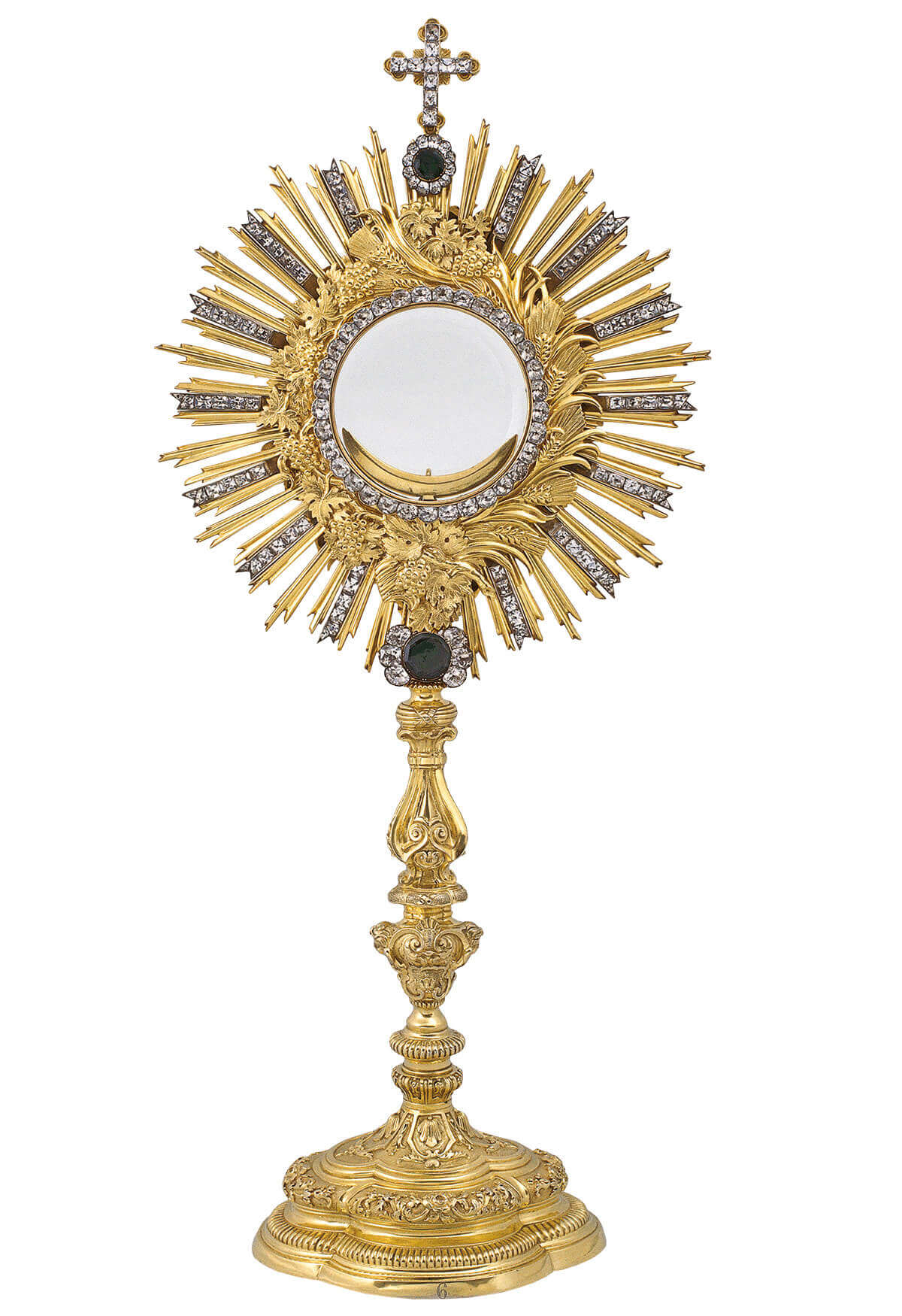Monstrance

PLACE/DATE
Portugal, last quarter 18th century
MATERIALS
Repoussé, chased and gilt silver, glass
DIMENSIONS
56,8 x 26,5 x Ø 11 cm (base); 2560 g
INV
OR.619
The monstrance or ostensory is a liturgical implement aimed to present the consecrated Host when it is exposed to the adoration of the faithful.
The use of the monstrance developed from the 13th century onwards, after the liturgical feast of Corpus Christi became official in 1264. Since then, it has taken on various morphologies and decorative solutions, in keeping with stylistic developments and changes in taste.
Generally made in precious materials, as is the case here, the monstrance consists of a more or less elaborate frame, raised on one or more feet and topped by a cross, the most important part of the piece being the glazed element or receptacle where, during the ceremony of exposition of the Blessed Sacrament, the Eucharistic crescent with the large consecrated host is presented. This monstrance fits the subtype of radiating ostensory, given the morphology of the receptacle, surrounded by a radiating halo, with some of the rays enlivened by white stonework and surrounded by a garland of bunches of grapes and ears of wheat alluding to the Eucharist.
